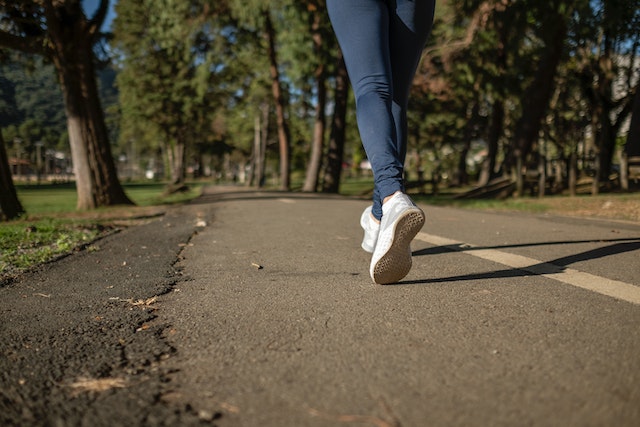- 29 May 2024
- 578
Step Up Your Balance with Walking Exercises: Walk Your Way to Stability

Introduction
Welcome fellow walkers! I’m Sarah, a certified fitness instructor passionate about helping people move with confidence. Today, we’ll explore how to transform your regular walks into dynamic exercises that improve balance and stability. Whether you’re a seasoned walker or just starting out, these exercises can benefit everyone.
Why Balance Matters
As we age, our balance naturally declines. This can increase the risk of falls, injuries, and limit our mobility. Strong balance allows us to navigate everyday activities with confidence, from walking on uneven surfaces to reaching for objects on high shelves.
Benefits of Walking for Balance
Walking is a fantastic exercise for overall health, and it’s particularly beneficial for improving balance. Here’s why:
- Engages multiple muscle groups: Walking works your legs, core, and glutes, all crucial for maintaining balance.
- Improves proprioception: This is your body’s awareness of its position in space. Walking on different terrains challenges your proprioception, enhancing your ability to stay stable.
- Boosts confidence: As your balance improves, you’ll feel more confident and secure while walking.
Warm-Up and Cool-Down
Always begin with a light warm-up (5-10 minutes) to prepare your body for exercise. This could include walking in place, arm circles, and gentle stretches. After your walk, dedicate 5-10 minutes to cool-down stretches to improve flexibility and prevent muscle soreness.

Walking Exercises for Balance
Table 1: Walking Exercises for Balance
| Exercise | Description | Targets |
|---|---|---|
| Heel-to-Toe Walk | Walk heel-to-toe, placing your heel directly in front of the other foot’s toes. Focus on maintaining good posture. | Calves, hamstrings, core |
| Side Shuffles | Take small steps to the side, keeping your feet hip-width apart. Shuffle right for 10 steps, then left. | Inner and outer thighs, core |
| Backward Walking | Slowly walk backward, focusing on a fixed point in front of you for better balance. Engage your core for stability. | Hamstrings, glutes, core |
| Walking Lunges | Step forward with one leg, lowering your hips until your back knee nearly touches the ground. Push back up to starting position and repeat with the other leg. | Quads, hamstrings, glutes |
Challenge Yourself: Advanced Walking Exercises
Optional: If you’re comfortable, try walking on uneven terrain like grass, gravel, or a nature trail. This will further challenge your balance and proprioception.
For an extra challenge, try single-leg walks. Stand on one leg, holding onto a stable object for support if needed. Slowly take a step forward with the other leg, then bring it back to starting position. Repeat 10 times on each leg.
Staying Safe and Having Fun
Listen to your body and take breaks when needed. Walk in well-lit areas and wear appropriate footwear with good traction. Most importantly, have fun! Put on your favorite playlist, explore new walking paths, or walk with a friend.
Conclusion
By incorporating these walking exercises into your routine, you can significantly improve your balance, coordination, and overall well-being. Remember, consistency is key. So lace up your walking shoes, step up your balance game, and walk with confidence!

